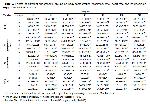Animals: In this study, 15 female and 15 male New Zealand rabbits weighting between 2 and 4 kg were employed. All rabbits were obtained from a breeding farm with certification, and housed in separate pens individually for acclimatizing new environment for 2 weeks. The room temperature (16-19 °C), humidity (50-60%) and light and dark rate (12:12 hours) were arranged. All rabbits had access to rabbit pellet diet and water ad libitum. They were also given washed carrot and dried bread.
All experiments were approved by Adnan Menderes University Local Board of Ethics Committe for Animal Experiments (Number-64583101/2013/81).
Monitoring of the Reflexes: The main reflexes (standing, ear and finger) of each individual rabbit were evaluated in five minutes intervals before, during and after the administration processes and recorded. The durations of the surgical anesthesia and total sedation times were recorded. To avoid eye dryness, Viscotears® were used for the eyes to while they were sleeping.
Anesthesia Protocols: Thirty rabbits were randomly separated into five groups consisting of three males and three 3 females. Twenty-four hours before the examinations, weights, body temperatures, pulses and respiratoric rates of each animals were recorded. Rabbits showing abnormal physiological findings were excluded from the study.
All examinations were performed between the hours of 9:00-13:00 in each day during the study. In group 1, induction was performed with isoflurane by using face mask. Induction was noted and endotracheal intubation of the airways was performed. The tube was connected to the anaesthesia machine and anesthesia was lasted for four hours. In group 2 the same procedure in group 1 was applied using sevoflurane instead. In group 3, midazolam (1.0 mg/kg), medetomidine (0.05 mg/kg) and ketamine (20 mg/kg) were administered intramuscularly. Anaesthesia protocols were lasted for four hours with additional injections. In some animals anesthesia was completely reversed by using the chemical antagonists, flumazenil (0.1 mg/kg) and atipamezole (0.5 mg/kg), injected subcutaneously. In group 4, anaesthesia was induced with fentanyl (0.0053 mg/kg) and propofol (4-8 mg/kg) and maintained with fentanyl (0.48 μ/kg/min) and propofol (0.6 mg/kg/min) for four hours. In group 5 xylazine (5 mg/kg) were used for premedication. General anesthesia was performed with ketamine (5 mg/kg). Four hours anesthesia was maintained using half dose of the first administration dose.
During the applications V. auricularis magna was used. It was catheterized with 22 g catheter (NovaCath®) and to avoid catheter obstruction %0.9 NaCl was administered with heparinized (Nevparin®) syrings to the catheter after each application.
Monitoring Clinic Parameters: Body temperatures observed with digital termometer (Nimo®), respiratory rates were noted and tail was clipped for placement of a pulse oximeter probe for measuring oxygen saturation (SpO2) with monitor (PETAS KMA® 275). Data were collected at preanesthesia, induction (0 min) and 5, 10, 15, 30, 45, 60, 120, 180, 240 mins after the induction.
Laboratory Tests: Blood samples (2 mL each) were collected from marginal ear vein before (0 time), during and after 6, 12 and 24 hours of induction for measurement of CRP and cTn-I. Blood samples were allowed to analysis of CRP and cTn-I.
Serum CRP: Serum CRP was measured by Rabbit CRP Elisa Kit, commercially available from CUSABIO Biotech Co., Ltd. (Cat No: CSB-E06847Rb). The assay was performed according to the manufacturer's instructions. ELISA plates were pre-coated with rabbit CRP. Colour was developed with TMB substrate and absorbance was measured at 450 nm against standard curves. Mean values were reported. The sensitivity of the assay was 2 pg/mL. The detection range was 7.8 pg/mL-2000 pg/mL. Intra-assay and inter-assay coefficient of variations were <8% and <10%, respectively.
Serum Cardiac Troponin I (cTn-I): Serum cTn-I was measured by rabbit cardiac troponin I (cTn-I) Elisa Kit, commercially available from CUSABIO Biotech Co., Ltd. (Cat No: CSB-E11286Rb). The assay was performed according to the manufacturer's instructions. ELISA plates were pre-coated with anti-rabbit cTn-I antibody. Colour was developed with TMB substrate and absorbance was measured at 450 nm against standard curves. Mean values were reported. The sensitivity of the assay was <11.75 pg/mL. The detection range was 47 pg/ml-3000 pg/mL. Intra-assay and inter-assay coefficient of variations were <8% and <10%, respectively.





